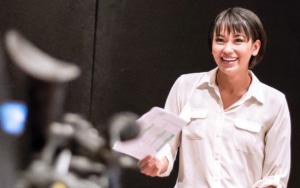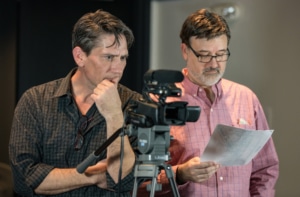DCPA NEWS CENTER
Enjoy the best stories and perspectives from the theatre world today.
Enjoy the best stories and perspectives from the theatre world today.
From the archives: this article was originally published on February 14, 2023

Julia Pace Mitchell
Acting has been around for centuries and over time evolved into different forms. One popular form is acting for the screen. While traditional theatre tells stories from start to finish, performing the same show each night for a different audience, film and television are produced by stitching together scenes, often doing take after take until it’s just right.
Although screen and stage acting require similar skills, there are a lot of differences that may not seem obvious at first. Laura Carson and Julia Pace Mitchell, teaching artists at the Denver Center for the Performing Arts (DCPA), share their thoughts on the two acting styles and tricks of the trade.

Laura Carson
Preparation: Whether acting on the big screen or in front of an audience of several hundred people, both mediums require a similar amount of preparation. Actors research their character’s backstories and the context of the scenes they are in, to understand the motivations and emotions of their characters and bring authenticity to their performance.

“TV and film are such collaborative mediums,” Carson emphasizes. “Every single department is critical to the success of the project. You’re a cog in a machine, and there’s so much satisfaction in having the technical muscle to hit your mark, move to the camera and do whatever you need to support the camera department that day.”

Photo by Brian Landis Folkins
If you’re interested in learning more about film and television, consider taking a spring class at the DCPA. Both Carson and Pace Mitchell are teaching On-Camera sessions and have a wealth of information to share. If you can’t wait until then, check out these tips:
